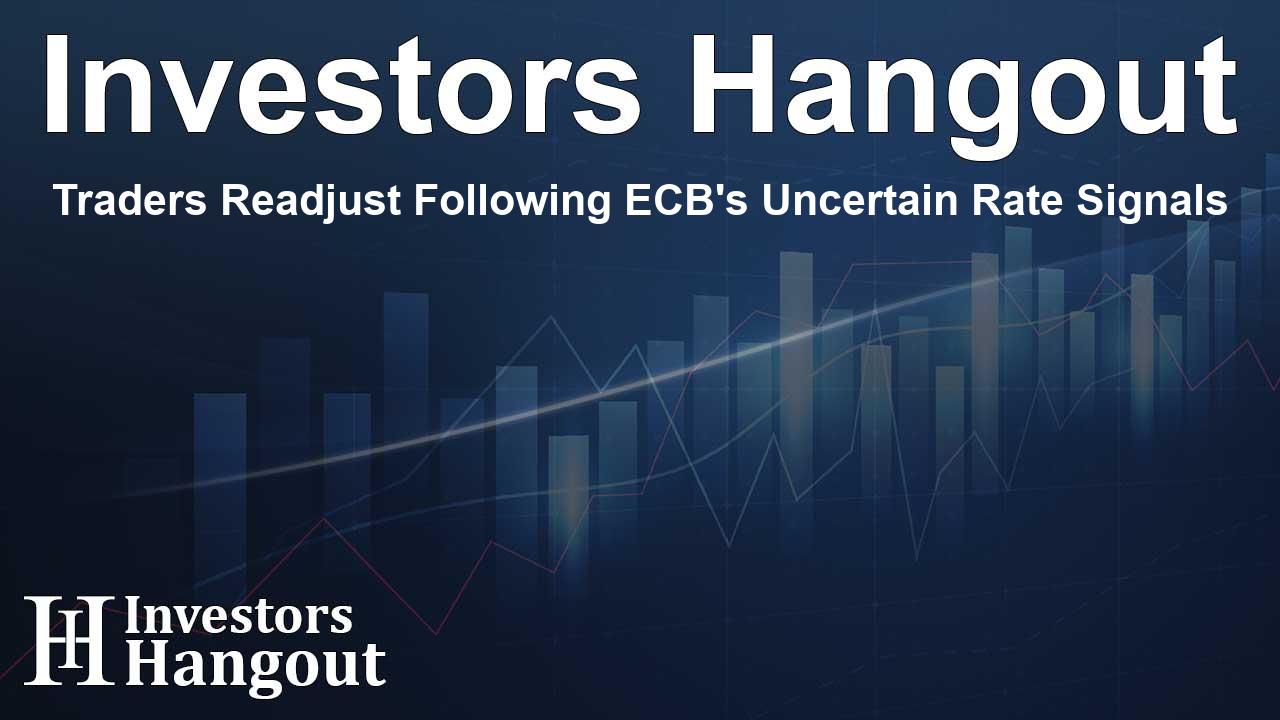Traders Readjust Following ECB's Uncertain Rate Signals

Traders Readjust Following ECB's Uncertain Rate Signals
As the European Central Bank (ECB) holds its recent meeting, its lack of clear direction regarding future rate cuts has led traders to reassess their positions. Throughout this week, market participants anticipated potential cuts, but the ECB's signals have shifted expectations significantly.
Impact of ECB's Rate Decision
Recent conversations among market insiders suggest that a further reduction in rates during the ECB's next meeting might not materialize unless there is a significant downturn in economic forecasts. After cutting the key deposit rate to 3.50%, the ECB has indicated that it will maintain a cautious approach, prioritizing the control of service inflation, which remains persistently high.
Insights from ECB Officials
Christine Lagarde, the chief of the ECB, provided key insights during the meeting when she emphasized that the future trajectory of rates is fluid, dependent on evolving economic indicators. This means that decisions on rate hikes or cuts will come on a meeting-by-meeting basis, allowing for flexibility and responsiveness to market conditions.
Changes in Market Sentiment
In response to Lagarde's statements and the ECB's latest move, traders have significantly reduced their expectations for further rate cuts. Sure enough, the probabilities for an immediate 25 basis points cut have dipped below 20%, suggesting a growing consensus that the central bank is less inclined to pursue aggressive monetary easing in the coming months.
Market Reactions and Economic Indicators
The reactions in the financial markets following the ECB's announcements have been notable. Eurozone government bond yields have jumped sharply as optimism around rate cuts has waned. Notably, Germany's two-year bond yield saw a substantial rise, reflecting traders' readiness to recalibrate their positions in light of the ECB's cautious stance.
Comparison With U.S. Federal Reserve Actions
As traders in Europe manage their expectations, they remain acutely aware of the contrasting approaches being adopted by the U.S. Federal Reserve. With expectations mounting for significant rate cuts from the Fed, particularly an initial 25 basis points reduction, the widening gap between U.S. and European monetary policies has raised questions about the future dynamics in currency and stock markets.
Potential Consequences of Divergent Policies
The anticipated Fed cuts could impact the euro's valuation significantly. If the euro appreciates in response to a more dovish stance from the Fed, it might create tighter financial conditions within the Eurozone, posing challenges for its growth trajectory. Analysts highlight the need for the ECB to remain vigilant regarding the strength of the euro in light of the Fed's moves.
Future Projections and Investor Sentiment
Even with an uncertain outlook on rate cuts, many investors view European government bonds as a less risky proposition compared to U.S. Treasuries. As the ECB lowers its growth expectations amid a noted decrease in domestic demand, the overarching sentiment remains cautious yet slightly optimistic.
Concerns Over Economic Growth
Concerns linger that a slower rate of cuts may hinder the economic recovery in the Eurozone, especially in light of weak domestic conditions and previous contractions in Germany's economy. Analysts predict that if the ECB delays easing its policies, the necessary stimulus to invigorate the economy may not be realized.
Conclusion: What Lies Ahead?
In conclusion, the path ahead for both the ECB and the euro will be closely monitored by traders and investors alike. Balancing economic growth against the backdrop of inflation and interest rates will require astute navigation from policymakers. The ECB's next moves, paired with the decisions from the Federal Reserve, will shape the financial landscape as we move forward.
Frequently Asked Questions
What decisions did the ECB make regarding interest rates?
The ECB cut the key deposit rate to 3.50% but emphasized a cautious approach to future cuts, focusing on monitoring inflation and economic conditions.
Why did traders adjust their expectations for rate cuts?
Traders recalibrated their expectations for further rate cuts after ECB officials indicated more flexibility and caution, reducing the likelihood of aggressive cuts.
How did the market react to the ECB's announcements?
Following the ECB's announcements, Eurozone government bond yields rose sharply, reflecting a reduced expectation for rate cuts and a reallocation of trading positions.
What is the outlook for the euro compared to the U.S. dollar?
Analysts suggest that while there may be modest gains for the euro, challenges remain as the Fed’s rate cuts could strengthen the dollar against the euro.
What concerns are there regarding the Eurozone's economic recovery?
Concerns exist that the ECB's cautious approach to rate cuts may slow down the required stimulus for economic recovery, potentially causing sluggish growth in the Eurozone.
About The Author
Contact Logan Wright privately here. Or send an email with ATTN: Logan Wright as the subject to contact@investorshangout.com.
About Investors Hangout
Investors Hangout is a leading online stock forum for financial discussion and learning, offering a wide range of free tools and resources. It draws in traders of all levels, who exchange market knowledge, investigate trading tactics, and keep an eye on industry developments in real time. Featuring financial articles, stock message boards, quotes, charts, company profiles, and live news updates. Through cooperative learning and a wealth of informational resources, it helps users from novices creating their first portfolios to experts honing their techniques. Join Investors Hangout today: https://investorshangout.com/
The content of this article is based on factual, publicly available information and does not represent legal, financial, or investment advice. Investors Hangout does not offer financial advice, and the author is not a licensed financial advisor. Consult a qualified advisor before making any financial or investment decisions based on this article. This article should not be considered advice to purchase, sell, or hold any securities or other investments. If any of the material provided here is inaccurate, please contact us for corrections.
